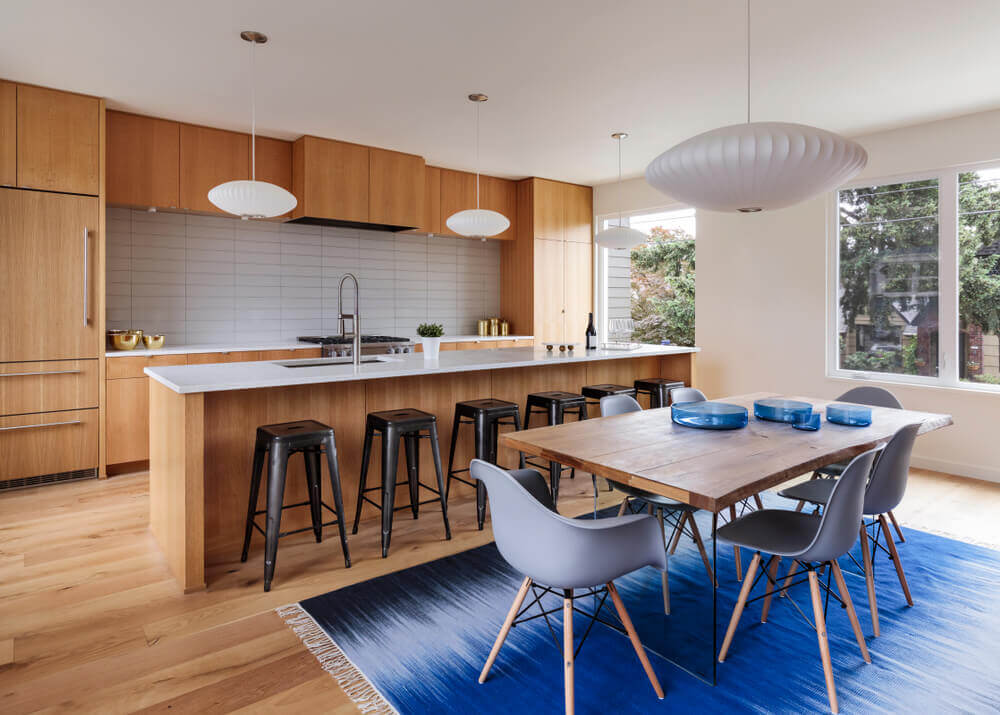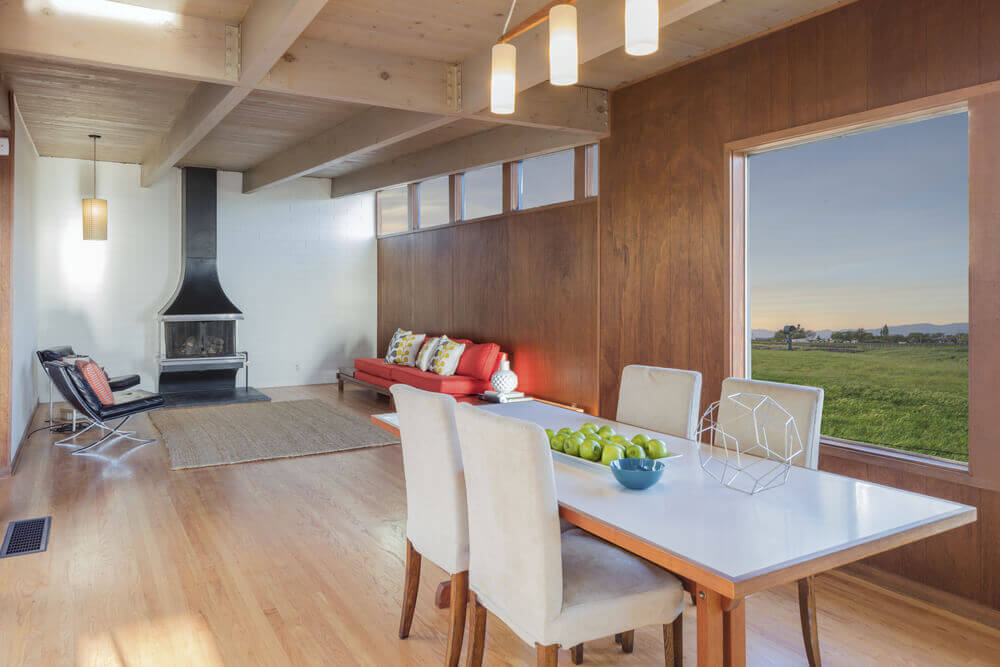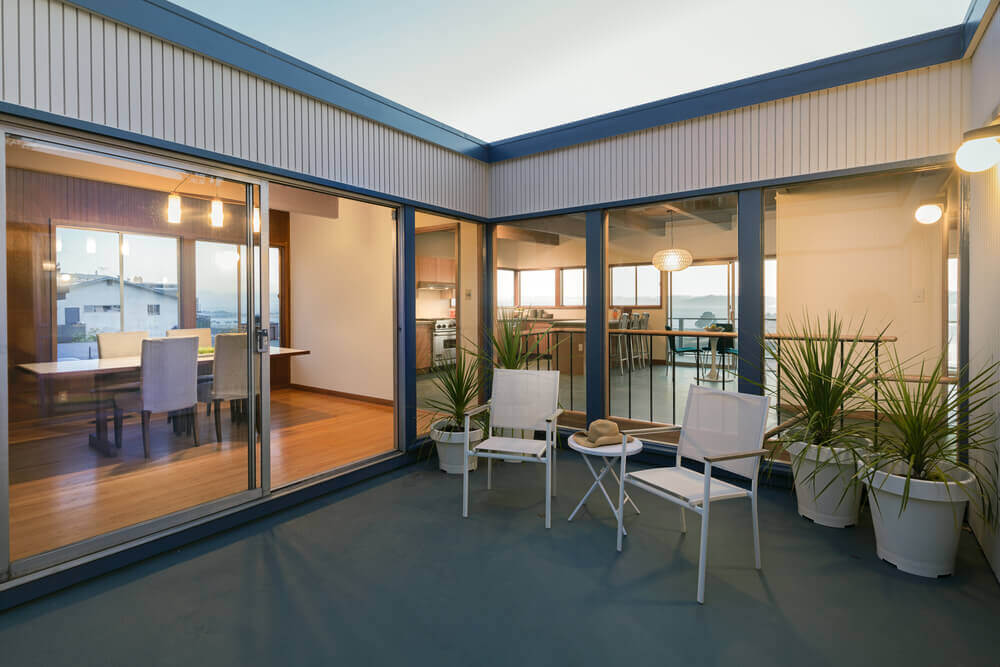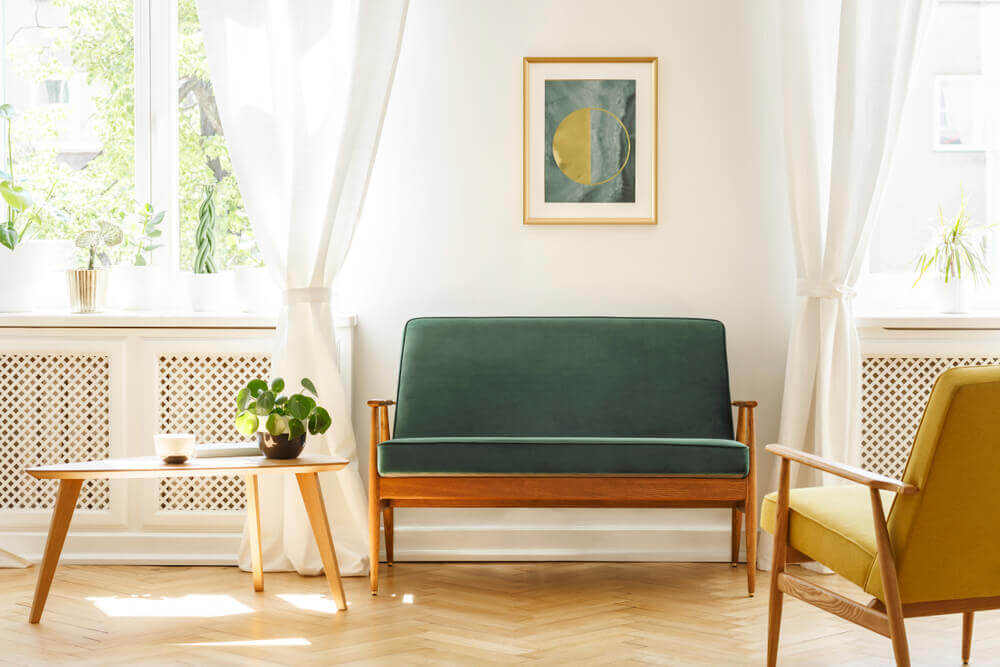For Dreamers - the Mid-Century Decor Style

Today, let’s look at the dream decor for anyone who loves styles from the 50s and 60s, flea markets and retro furniture auctions. Cara Greenberg coined the term “Mid-Century” in the 80s when presenting a collection that represented a style from the middle of the 20th century.
After World War II, furniture designers took the materials that were once used in the war to make chairs, tables, and light fixtures. Today, they’ve become iconic. People look for these pieces and replicate them for interior decor.
The Mid-Century decor style is fresh, elegant, clean and sophisticated, but it doesn’t skimp on practicality, colors, and modernity. Going with Mid-Century decor for your home can be laborious and, above all, costly.
But you can use the right accents to pull the look together without spending a lot. Follow our tips below and take your decor back to the post-war United States and bring on the style.
Colors and materials

In the Mid-Century decor style, new materials of the time, such as plastic, had a big influence on designers. For the most part, designers turned to materials such as vinyl, metal, glass, laminates, and plexiglass to create their furniture pieces.
Wood was another popular choice. In this decor style, you’ll mostly find it in furniture with pure, simple lines. Wooden cabinets are low with short legs and tend to slant.
This material is also used in large wall panels. They create warmth to counteract the plastic materials. Wood pieces here tend to be light or natural.
The Mid-Century decor style also uses a wide range of accent colors and natural tones in the other materials it uses, such as leather. Another star material in this decor is bronze, which flaunts a dark, golden color. You’ll find it in both decorative accessories and furniture pieces.
The Mid-Century decor style adores geometry

Fabric, rugs, wallpaper patterns, and even art pieces and their frames all feature geometric designs. The geometry in the Mid-Century decor style uses big shapes that give a retro character to settings.
The most modern forms of this decor style use less geometric shapes and strategically place them to avoid overwhelming the decor, especially in small or poorly-lit rooms.
Love for pure lines

All the elements of this decor style rise from simple lines and pure outlines. Mid Century decor especially uses clean and straight lines, which forms a base for the geometry of the furniture and accessories.
If you want to nail the decor style, avoid exuberance and opulence. Mid-Century furniture isn’t ornate and details are generally absent here.
Connected to nature

Mid-Century interiors naturally flow with their exteriors. It’s an ongoing effort to introduce nature in the space of each and every room. Natural light should pour in through big windows that offer a great view of the outdoors. And the windows can have discrete blinds or not.
Iconic Mid-Century-style pieces

The iconic pieces of this decor style come from the creativity of interior designers, artists, and architects of a time where they pulled together all of the essence of the mid-years to create unique pieces. Many of their designs have already become classics for interior design.
Such is the case for the Tulip chair, the Ant chair or the later creations, such as the Egg and Swan. The latter chairs were designed by Arne Jacobson, who was one of the most important designers and architects of the 50s and 60s. Additionally, his Mid-Century light fixture line is still very popular.
Aside from the Egg and Swan chairs, many other Mid-Century pieces have become true interior design icons. Sideboards, tables, coffee tables and all kinds of accessories have all become one of the most sought-out pieces of home decor today.
Today, let’s look at the dream decor for anyone who loves styles from the 50s and 60s, flea markets and retro furniture auctions. Cara Greenberg coined the term “Mid-Century” in the 80s when presenting a collection that represented a style from the middle of the 20th century.
After World War II, furniture designers took the materials that were once used in the war to make chairs, tables, and light fixtures. Today, they’ve become iconic. People look for these pieces and replicate them for interior decor.
The Mid-Century decor style is fresh, elegant, clean and sophisticated, but it doesn’t skimp on practicality, colors, and modernity. Going with Mid-Century decor for your home can be laborious and, above all, costly.
But you can use the right accents to pull the look together without spending a lot. Follow our tips below and take your decor back to the post-war United States and bring on the style.
Colors and materials

In the Mid-Century decor style, new materials of the time, such as plastic, had a big influence on designers. For the most part, designers turned to materials such as vinyl, metal, glass, laminates, and plexiglass to create their furniture pieces.
Wood was another popular choice. In this decor style, you’ll mostly find it in furniture with pure, simple lines. Wooden cabinets are low with short legs and tend to slant.
This material is also used in large wall panels. They create warmth to counteract the plastic materials. Wood pieces here tend to be light or natural.
The Mid-Century decor style also uses a wide range of accent colors and natural tones in the other materials it uses, such as leather. Another star material in this decor is bronze, which flaunts a dark, golden color. You’ll find it in both decorative accessories and furniture pieces.
The Mid-Century decor style adores geometry

Fabric, rugs, wallpaper patterns, and even art pieces and their frames all feature geometric designs. The geometry in the Mid-Century decor style uses big shapes that give a retro character to settings.
The most modern forms of this decor style use less geometric shapes and strategically place them to avoid overwhelming the decor, especially in small or poorly-lit rooms.
Love for pure lines

All the elements of this decor style rise from simple lines and pure outlines. Mid Century decor especially uses clean and straight lines, which forms a base for the geometry of the furniture and accessories.
If you want to nail the decor style, avoid exuberance and opulence. Mid-Century furniture isn’t ornate and details are generally absent here.
Connected to nature

Mid-Century interiors naturally flow with their exteriors. It’s an ongoing effort to introduce nature in the space of each and every room. Natural light should pour in through big windows that offer a great view of the outdoors. And the windows can have discrete blinds or not.
Iconic Mid-Century-style pieces

The iconic pieces of this decor style come from the creativity of interior designers, artists, and architects of a time where they pulled together all of the essence of the mid-years to create unique pieces. Many of their designs have already become classics for interior design.
Such is the case for the Tulip chair, the Ant chair or the later creations, such as the Egg and Swan. The latter chairs were designed by Arne Jacobson, who was one of the most important designers and architects of the 50s and 60s. Additionally, his Mid-Century light fixture line is still very popular.
Aside from the Egg and Swan chairs, many other Mid-Century pieces have become true interior design icons. Sideboards, tables, coffee tables and all kinds of accessories have all become one of the most sought-out pieces of home decor today.







